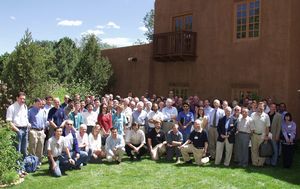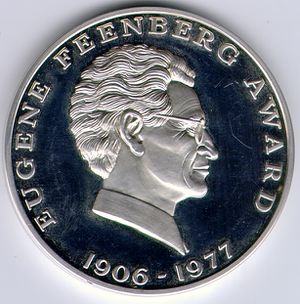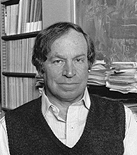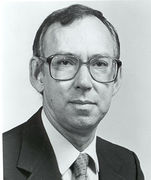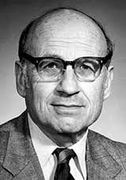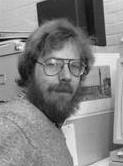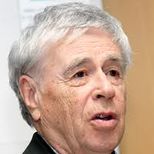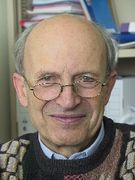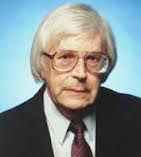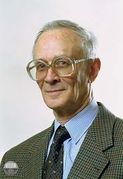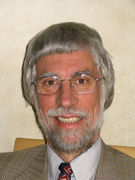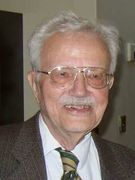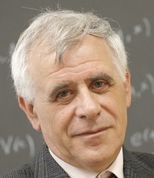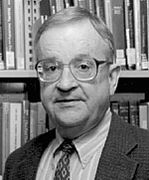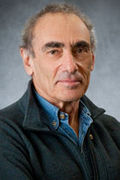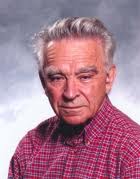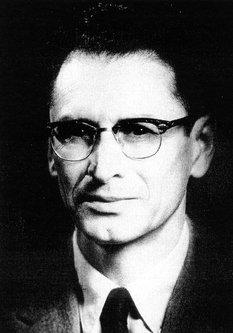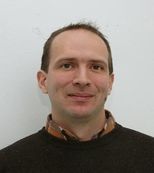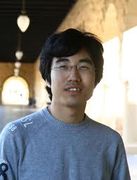Recent Progress in Many Body Theories:Main Page
Contents
RECENT PROGRESS IN MANY-BODY THEORIES (RPMBT)
This conference series is now firmly established as one of the premier series of international meetings in the field of many-body physics. The conference offers an important opportunity to recognize important achievements and significant new results in various aspects of many-body theory, and to highlight entire new fields which are strengthening both the breadth and depth of this broad discipline.
History
The first official RPMBT meeting was held in Trieste in 1978, in response to several precursor meetings that accentuated the need for a continuing series. The most important of these, which can be regarded as RPMBT-0, is the 1972 conference on The Nuclear Many-Body Problem organized by F. Calogero and C. Cioffi degli Atti in Rome. Additionally, there were two very significant workshops held in 1975 and 1977 at the University of Illinois, Urbana, with Vijay Pandharipande as the chief organizer. Later conferences in the series have been the 1981 RPMBT-2 meeting in Oaxtepec, Mexico; the 1983 RMPBT-3 meeting in Altenberg, Germany; the 1985 RPMBT-4 meeting in San Francisco, USA; the 1987 RPMBT-5 meeting in Oulu, Finland; the 1989 RPMBT-6 meeting in Arad, Israel; the 1991 RPMBT-7 meeting in Minneapolis, USA; the 1994 RPMBT-8 meeting in Schloss Seggau, Styria, Austria; the 1997 RPMBT-9 meeting in Sydney, Australia; the 1999 RPMBT-10 meeting in Seattle, USA; the 2001 RPMBT-11 meeting in Manchester, UK; the 2004 RPMBT-12 meeting in Santa Fe, USA; the 2005 RPMBT-13 meeting at Buenos Aires, Argentina, the 2007 RPMBT-14 meeting in Barcelona, Spain, the 2009 RPMBT-15 meeting in Columbus, Ohio, USA, and the 2011 RPMBT-16 meeting in Bariloche, Argentina. Highlights and a more detailed history of past meetings can be found in earlier volumes of the published proceedings of this series.
Topics
The scientific program covers not only traditional topics in many-body physics but also those frontier areas of current interest. Topics include:
- Quantum Fluids, Superfluids, and Solids
- Strongly Correlated Systems
- Phase Transitions and Critical Phenomena
- Nuclear and Subnuclear Physics
- Computational Quantum Many-Body Methods
- Quantum Information and Computation
- Complex Systems
- Cold Bose and Fermi Systems
- New Frontiers
Next Meeting
The Seventeenth International Conference on Recent Progress in Many-Body Theories (RPMBT-17) will be held in Rostock, Germany during 16-20 September 2013...
International Advisory Committee
- Raymond F. Bishop (Manchester, England),
- Jordi Boronat (U. Politecnica, Barcelona, Spain)
- Charles E. Campbell (treasurer, Minneapolis, USA)
- Joe Carlson (Los Alamos National Laboratory, USA)
- Siu A. Chin (Texas A&M, College Station, USA)
- John W. Clark(St. Louis, USA)
- Stefano Fantoni(SISSA, Italy)
- Peter Fulde (Dresden, Germany),
- Susana Hernandez (Chair, Buenos Aires, Argentina)
- Eckhard Krotscheck (SUNY, Buffalo, USA)
- Efstratios Manousakis (Florida State University, Tallahassee, USA)
- David Neilson (Secretary, Camerino, Italy)
- Gerardo Ortiz (Indiana University, Bloomington, USA)
- Arturo Polls (Barcelona, Spain)
- Mikko Saarela (Oulu, Finland)
- Masahito Ueda (Tokyo, Japan)
Feenberg Memorial Medal
The Eugene Feenberg Memorial Medal (or Feenberg Award) was established by the many-body physics community at the Third International Conference on Recent Progress in Many-Body Theories in 1983 as a continuing memorial to Eugene Feenberg. It commemorates his wise stewardship of a field that penetrates into all branches of physics; his deep physical insights and great formal achievements; his dedicated service as teacher and mentor; and the exemplary integrity of his personal and professional life. The Feenberg Award thus serves to preserve the memory of the unique and enduring contributions of Eugene Feenberg to physics, especially to the foundations of nuclear physics and microscopic quantum many-body physics of nuclei and quantum fluids.
The Eugene Feenberg Medal is awarded under the auspices of the International Advisory Committee of the series of International Conferences on Recent Progress in Many-Body Theories. The Feenberg Medal, first awarded in 1985, is designated for work that is firmly established and which can be demonstrated to have significantly advanced the field of many-body physics. The work considered can be accumulative contributions sustained over time, or a single important contribution. In appropriate cases, the award can be shared by as many as three people for a single body of work. The Feenberg Award Rules are listed below.
Past recipients have included Walter Kohn (1991) and Anthony J. Leggett (1999), both of whom later won a Nobel Prize for their work, in 1998 and 2003, respectively.
A full list of Feenberg Medallists is given below, together with their
respective citations.
List of Feenberg Awardees and their Citations
| NAME OF WINNER | YEAR OF AWARD | MEETING OF AWARD | CITATION |
| David PINES | 1985 | RPMBT4; San Francisco [cttee chaired by Chuck Campbell] | "for his seminal contributions to the foundations of quantum many-body theory and for path-breaking applications to many-electron systems, neutron stars, and elementary excitations in quantum fluids" |
| John W. CLARK | 1987 | RPMBT5; Oulu [cttee chaired by Ray Bishop] | "for his development of the method of correlated basis functions into one of the most powerful microscopic techniques in quantum many-body theory, and for his applications of it in nuclear physics, especially to nuclear matter" |
| Malvin H. KALOS | 1989 | RPMBT6; Arad [cttee chaired by Fred Ristig] | "for his pioneering, highly original, and profound corpus of work on stochastic methods in quantum many-body theory, specifically for his invention of the Green's function quantum Monte Carlo method, and for his early recognition of the importance of computational physics and high-performance computing to meet its needs" |
| Walter KOHN | 1991 | RPMBT7; Minneapolis [cttee chaired by Chris Pethick] | "for his seminal contributions to theoretical solid-state physics, and for his development of the density-functional theory that has revolutionized the calculation of electronic structure for atoms, molecules, surfaces, and solids in physics, chemistry, and materials science" |
| David M. CEPERLEY | 1994 | RPMBT8; Schloss Seggau [cttee chaired by John Clark] | "for his path-breaking contributions to computational many-body physics that have brought our understanding of fundamental strongly-interacting quantum systems into a new era and that have opened the way to quantitative microscopic predictions of the properties of real, complex materials" |
| Lev P. PITAEVSKIĬ | 1997 | RPMBT9; Sydney [cttee chaired by Luciano Reatto] | "for his seminal contributions to the theory of Bose superfluids and the helium liquids, specifically for his studies of fluctuations close to the lambda transition and of elementary excitations and vorticity in a superfluid, which have provided a cornerstone of our understanding of key aspects of superfluid 4He and that has now expanded to the field of cold bosonic atoms" |
| Anthony J. LEGGETT | 1999 | RPMBT10; Seattle [cttee chaired by Andy Jackson] | "for his seminal contributions to many-body physics, including the explanation of fundamental properties of superfluid 3-He in the millikelvin regime, new insights into macroscopic quantum coherence, and the theoretical exploration of atomic Bose-Einstein condensates" |
| Philippe NOZIÈRES | 2001 | RPMBT11; Manchester [cttee chaired by Eckhard Krotscheck] | "for his rigorous development of the theory of a normal Fermi liquid, which provided a firm microscopic foundation for the Landau theory, and for his definitive work on the properties of the free electron gas, particularly in the regime of realistic metallic densities" |
| Spartak T. BELYAEV | 2004 | RPMBT12; Santa Fe [cttee chaired by John Negele] | "for his pioneering work on superfluidity, particularly his independent introduction of the revolutionary concept of anomalous propagators and their application to dilute Bose liquids and to pairing in nuclear matter, which changed our understanding of the physics of quantum many-body systems with a formulation that has become the standard language of the subject" |
| Lev P. GOR'KOV | 2004 | "for his pioneering work on superconductivity that goes far beyond the original BCS theory through his independent development and application of the revolutionary concept of anomalous propagators, a formulation that has become the standard language of the subject" | |
| Raymond F. BISHOP | 2005 | RPMBT13; Buenos Aires [cttee chaired by Chuck Campbell] | "for his development of the coupled-cluster method toward a comprehensive ab initio approach, and for his innovative applications of it across the full spectrum of subfields of quantum many-body physics" |
| Hermann G. KÜMMEL | 2005 | "for his role in the creation and early development of the coupled-cluster method, and for his pioneering high-accuracy applications of it to problems in nuclear and subnuclear physics" | |
| Stefano FANTONI | 2007 | RPMBT14; Barcelona [cttee chaired by Jordi Boronat] | "for his leading role in the development and extensive applications of the correlated basis function method, including the advance of Fermi hypernetted chain theory, thereby providing an accurate, quantitative, microscopic description of strongly-interacting quantum many-body systems, especially for finite atomic nuclei" |
| Eckhard KROTSCHECK | 2007 | "for his leading role in the development and extensive applications of the correlated basis function method, including the advance of Fermi hypernetted chain theory, thereby providing an accurate, quantitative, microscopic description of strongly-interacting quantum many-body systems, especially for inhomogeneous quantum fluids" | |
| J. Dirk WALECKA | 2009 | RPMBT15; Columbus [cttee chaired by Siu Chin] | "for theoretical contributions in electroweak interactions with nuclei, the development of relativistic field theories of the nuclear many-body problem and unparalleled achievements in the education of a generation of young nuclear many-body physicists" |
| Gordon BAYM | 2011 | RPMBT16; Bariloche [cttee chaired by David Neilson] | "for the self-consistent conserving approach to many-body perturbation theory that provided a solid platform for perturbative expansions, and for his novel applications of quantum many-body methods in nuclear physics, astrophysics, highly condensed matter, and atomic physics" |
| Leonid KELDYSH | 2011 | "for his extension of many-body perturbation theory to non-equilibrium systems. This technique continues to play a central role in numerous areas of many-body physics. His work on electron-hole plasmas in semiconductors is also recognized" |
Photograph Gallery of Feenberg Awardees
Feenberg Award Rules
In the following, the "Advisory Committee" means the "International Advisory Committee of the Series of International Conferences on Recent Progress in Many-Body Theories," and the "International Conference" or "Conference" means the "International Conference on Recent Progress in Many-Body Theories."
I. General Rules:
A. The Feenberg Medal, or Feenberg Memorial Medal in Many-Body Physics, may be awarded for an important contribution or contributions to many-body theory.
B. In selecting recipients of the Medal, there will be no discrimination based on sex, age, race, nationality, religion, or political beliefs.
C. Members of the operative Selection Committee and their families and relatives are not eligible for receipt of the medal.
II. Award Ceremony:
A. The Medal will be awarded approximately every two years. The ceremony for awarding the Medal will be held at the International Conference for as long as these Conferences exist and retain a format similar to that of the first four Conferences. Thereafter the Advisory Committee should make appropriate arrangements for perpetuating the award and preserving its spirit.
B The Selection Committee will organize the ceremony in collaboration with the organizers of the Conference. The recipient of the award will be invited by the Conference organizers as an invited speaker.
C. The tribute to the awardee will be published in the proceedings of the Conference at which the Feenberg Medal was awarded. In the same proceedings an updated list of patrons, sponsors, and contributors is to be published.
D. Award dates will be fixed by mutual agreement of the Selection Committee (see below) and the Advisory Committee.
III. Selection Committee:
A. The Selection Committee which will decide on the award to be granted at the next Conference, and the Chairperson of that Selection Committee, are to be appointed by the Advisory Committee at each nternational Conference.
IV. Duties of the Selection Committee:
A. The Chairperson of the Selection Committee will organize the work of that Committee according to the present rules.
B. The Selection Committee will organize, with the agreement of the Advisory Committee, the publicity for collecting proposals for the recipient of the Medal.
C. Only one award will be given at each Conference, which award should be given preferably to one person, but to no more than three persons, and in any case for a single corpus of work.
D. The Selection Committee is charged with preparing a citation for general circulation, describing the achievements of the recipient or recipients which led to the award.
V. Rule Changes:
A. Any proposal for changing these rules should be advanced to the Advisory Committee by six months prior to its next meeting.
Brief Biography of Eugene Feenberg
Born October 6, 1906 in Fort Smith, Arkansas, Eugene Feenberg received a B.A. in physics and M.A. in mathematics in 1929 from the University of Texas, Austin after three years of study. After a year and a half traveling in Europe as a Parker Traveling Fellow, visiting the groups of Sommerfeld, Pauli, and Fermi, he received his Ph.D. in 1933 from Harvard University, where his thesis advisor was E. C. Kemble. His thesis included the first statement and proof of the quantum optical theorem.
Subsequently Feenberg was Instructor or Fellow at Harvard, Wisconsin, and the Princeton Institute for Advanced Studies, during which time he collaborated with Wigner, Bardeen, Breit and Phillips among others. After eight years on the faculty of New York University and four years during World War II at Sperry Gyroscope, Feenberg joined the faculty of Washington University (St. Louis) in 1946, and in 1964 became the Wayman Crow Professor of Physics, a chair previously held by Arthur H. Compton, Arthur L. Hughes, and Edward U. Condon.
Much of Feenberg's early research was concerned with the theory of the nucleus, culminating in the publication of Shell Theory of the Nucleus by Princeton University Press in 1955. While he had a career-long interest in perturbation theory, he turned his primary focus to the theory of quantum fluids, most notably the helium liquids, toward the end of the 1950's, a subject to which he would contribute very importantly for the next two decades until his death in 1977 . Along with his students, he developed the method of correlated basis functions in order to deal with the strong, short-range repulsion between helium atoms that makes the theory of the helium fluids virtually intractable using ordinary perturbation theory. The early part of this research is the subject of his monograph Theory of Quantum Fluids (Academic Press, 1969).
His willingness to tackle the challenge of strong, short-range correlations by developing a theoretical, ab initio framework to deal with them from first principles, characterizes much of Feenberg's research. As important as his research is, his personal integrity and high principles continue to serve as an inspiration for his former students and colleagues. The awarding of the Eugene Feenberg Memorial Medal serves as an opportunity to commemorate and perpetuate this man's unique influence on physics and physicists.
Kümmel Early Achievement Award
The International Advisory Committee responsible for the International Conference series on "Recent Progress in Many-Body Theories" and for awarding the Feenberg Medal decided in 1995 to establish a new award for young physicists whose published work is a significant contribution to quantum many-body theory. The Kümmel Award Rules are listed below.
The title of this award, "THE HERMANN KÜMMEL EARLY ACHIEVEMENT AWARD IN MANY-BODY PHYSICS", honors Prof. Kümmel's long and distinguished career as a leader in the field and as a mentor for younger generations. It should be noted that Prof. Kümmel, together with Prof. Raymond Bishop, received the Feenberg medal in 2005 for their development of the Coupled-Cluster method.
A full list of Kümmel Awardees is given below, together with their respective citations.
List of Kümmel Awardees and their Citations
| NAME OF WINNER | YEAR OF AWARD | MEETING OF AWARD | CITATION |
| Frank VERSTRAETE | 2007 | RPMBT14; Barcelona [cttee chaired by Susana Hernandez] | "for his pioneering work on the use of quantum information and entanglement theory in formulating new and powerful numerical simulation methods for use in strongly correlated systems, stochastic nonequilibrium systems, and strongly coupled quantum field theories" |
| Joaquin DRUT | 2009 | RPMBT15; Columbus [cttee chaired by Mikko Saarela] | "for establishing the thermodynamic and pairing properties of a dilute spin-1/2 Fermi gas in the unitary regime using Quantum Monte Carlo and Field Theory methods" |
| Xiaoliang QI | 2011 | RPMBT16; Bariloche [cttee chaired by Gerardo Ortiz] | "for his contribution to the topological field theory of topological insulators" |
Photograph Gallery of Kümmel Awardees
Kümmel Award Rules
TITLE: Hermann Kümmel Early Achievement Award in Many-Body Physics
PURPOSE: To encourage and reward excellence in the field of Quantum Many-Body Theory. The awardee will be selected on the basis of outstanding published work that has been recognised as comprising a significant advance in the field.
PRESENTATION: The award will be presented at the International Conference on Recent Progress in Many- Body Theories, to which the awardee will be invited to deliver a plenary talk. The local expenses plus the conference registration fee will be paid for the awardee to the same extent as for other invited speakers.
FREQUENCY: One award, which may not be split among more than one awardee, will be made at each meeting in the Series of International Conferences on Recent Progress in Many-Body Theories.
NOMINATIONS: Nominations should be forwarded to the Selection Committee by the established deadline, after a call issued by the committee. Nominations should include:
- A brief description of the achievement contained in the work for which the award is to be considered, highlighting its importance to the field of quantum many-body theory and the original contributions of the nominee
- A proposed citation for the award
- A curriculum vitae of the nominee
- A list of up to 3 relevant refereed publications that describe the work
- No more than 3 letters of support.
CANDIDATES: Each candidate for the award must normally have received his or her PhD within a period of 6 years prior to the closing date for nominations.
SELECTION COMMITTEE: The awardee will be chosen by a Selection Committee whose Chair and other members will be appointed by the International Advisory Committee of the Series of International Conferences on Recent Progress in Many-Body Theories. Each member of the Selection Committee will serve no more than 2 consecutive terms.
TRIBUTE: A tribute to the awardee will be published in the official Proceedings of the Conference at which the award was made. The Selection Committee is charged with the preparation of the tribute and of the final citation for general circulation.
Brief Biography of Hermann Kümmel
Hermann Kümmel was born in 1922 in Berlin. After obtaining his Diploma degree in 1950 from Humboldt University in East Berlin, he received the Ph.D. in Theoretical Physics from the Free University in West Berlin, where he continued with his research until moving to Iowa State University in Ames, Iowa, USA as a research associate. It was during his two years in Ames that, in collaboration with Fritz Coester, the foundations were laid for the birth of the coupled cluster method (CCM) for which he later became renowned. In 1960, Professors Kümmel and Coester published their seminal ideas of the CCM in the journal Nuclear Physics. After periods at the University of Tübingen, the Max Planck Institute for Nuclear Chemistry in Mainz and the University of Mainz, and at Oklahoma State University as Professor of Physics, Professor Kümmel returned to Mainz as senior scientist at the Max Planck Institute, where he built a strong research group, and Adjunct Professor at the University of Mainz.
In 1969 Professor Kümmel moved with his entire research group to a Chair in Physics at the newly established Ruhr University in Bochum (RUB), Germany, where he established RUB as one of the world's leading centers in quantum many-body theory. In particular, it was at this time that he turned his attention to the theoretical development and computational application of the CCM to nuclear systems specifically and fermionic systems in general. The level of sophistication achieved in Bochum under his leadership, in both formal and computational strength, has rarely been matched elsewhere.
He retired in 1988 at the mandatory retirement age, retaining his association with RUB as Professor Emeritus. To mark his achievements in the field he was also elected as the first Honorary President of the International Advisory Committee for this RPMBT series of international conferences.
